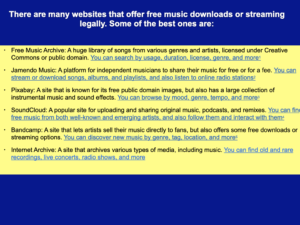Hey rebels, remember those cringe-worthy ads from the 2000s telling you not to pirate movies? Yeah, well, guess what? Nobody cares. Especially not the millions who are now happily pirating music, and they’re doing it with style. According to Wired, music piracy is back in full swing, with over 17 billion visits to piracy websites last year alone—a whopping 13% increase from 2022. And we’re not talking about ancient relics like Napster; we’re talking about the sly resurgence of pirating tunes from YouTube.
Yes, the same platform that brought you cat videos and cringe-worthy influencers is now the go-to place for snagging every song imaginable. Thanks to some clever websites, you can rip the audio from any YouTube video, download it as an MP3 or .wav file, and sail the seas of free music. No subscriptions, no ads, no hassle.
Muso, the self-proclaimed music piracy watchdog, spilled the beans that a whopping 40% of music piracy is courtesy of these sneaky “YouTube-to-MP3” sites. Blame it on the streaming giants like Spotify and Apple Music, which now charge a hefty $10.99 a month. Seriously, who wants to spend $132 a year when you can get your favorite jams for free?
But here’s the plot twist—Google, the overlords of YouTube, seems cool with it. Even though they claim to despise copyright infringement, a simple Google search for “YouTube to MP3” leads you straight to these piracy havens. Apparently, they’re too busy counting their ad revenue to enforce their own policies.
YouTube spokesperson Jack Malone wants you to believe they care about artists and creators getting their fair share. He says they take action against audio-ripping services when notified. Funny enough, no one seems to have alerted them about the 10 blue links that pop up on the first page of a “YouTube to MP3” search. So much for commitment.
But why bother paying for music when you can join the piracy revolution? Napster may be dead, but its rebellious spirit lives on through YouTube.
Surprisingly, music piracy had been on a nosedive for the past seven years. Exclusive album releases on platforms like Tidal and Apple Music, which fueled piracy back in the day, had taken a backseat. However, as Muso CEO Andy Chatterley reveals, piracy is back, and it’s back with a vengeance.
Blame it on the ever-increasing costs of streaming services or sky-high mobile data charges in some regions—people are turning back to the good ol’ days of downloading tracks over Wi-Fi. According to Muso’s findings, a staggering 40% of music piracy is now channeled through sites ripping audio from YouTube videos. Move over torrents and illegal streams; YouTube-to-MP3 is the new cool kid in town.
So, what about the big shots like Taylor Swift? Despite her dominating the charts and selling millions of records, her albums were torrented hundreds of thousands of times. In 2023 alone, the rerecorded version of “1989” was torrented over 275,000 times. Torrents may be a drop in the piracy ocean, but they’re making waves, especially now that piracy is making a grand comeback.
It’s been almost 25 years since Napster changed the game, and in that time, we’ve seen countless ways to buy and stream music. But snagging tunes from the internet is like a timeless classic—it never really goes out of style.


